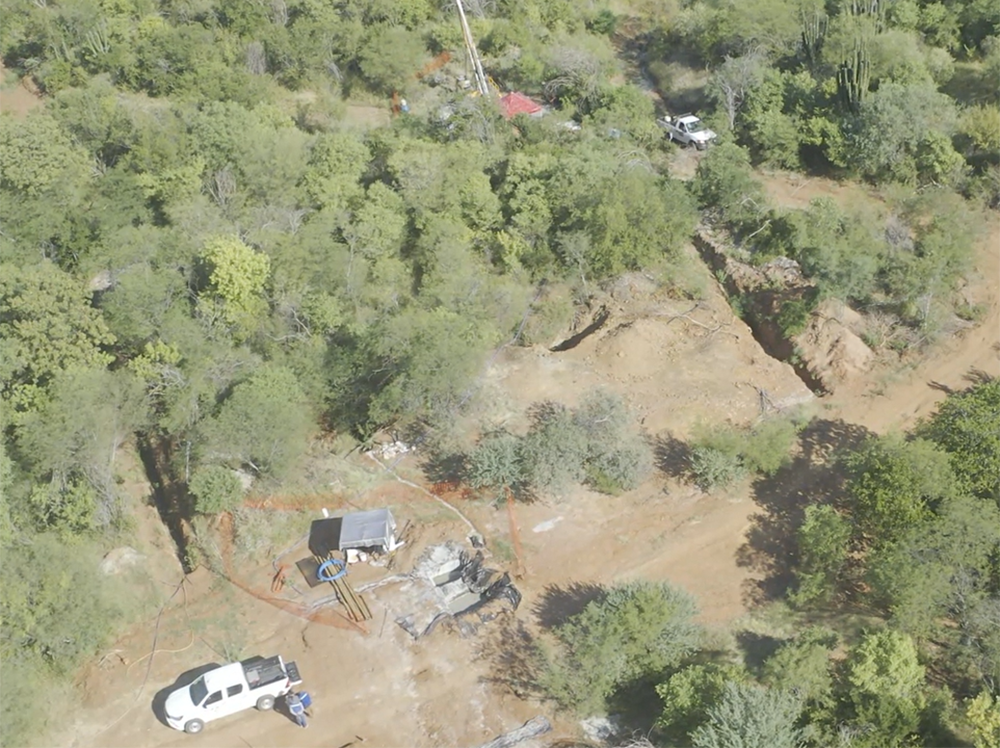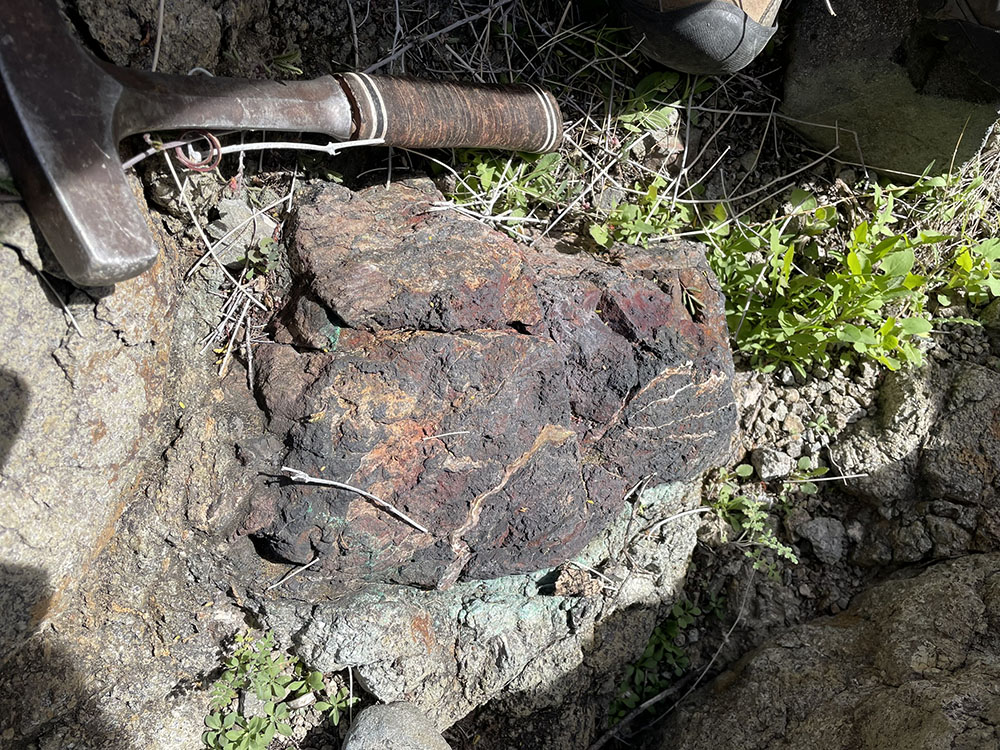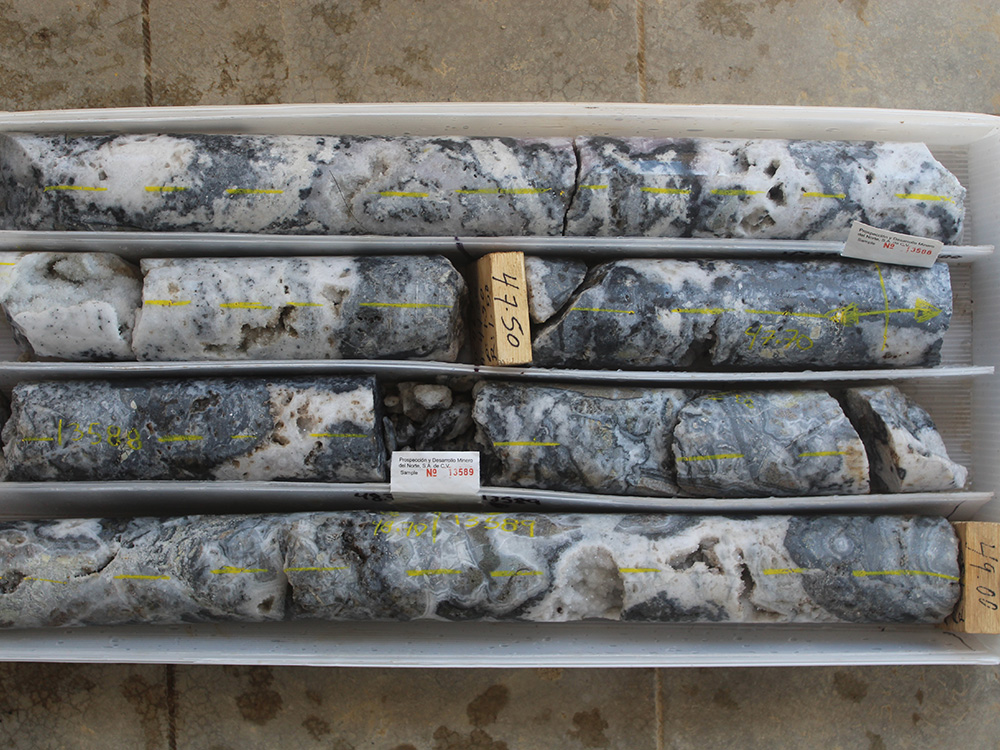About Prismo Metals
Prismo Metals Inc. (Prismo, CSE:PRIZ) is an exploration stage company formed by three co-founders, Craig Gibson, Peter Megaw and Alain Lambert in 2019. Prismo acquired two precious metals projects in Mexico from its founders: the Palos Verdes project, near Mazatlán in Sinaloa State was acquired from ProDeMin, the geological service company of Dr. Gibson, and Los Pavitos, near Alamos in Sonora State was acquired from Minera Cascabel, the services company of Dr. Megaw. Prismo later acquired an interest in Hot Breccia, a copper project in Arizona.
Palos Verdes consists of a 22.77 hectare concession that lies in the historically important and productive Panuco-Copala district which includes Vizsla Silver’s Panuco-Copala project and is well located near both the old highway and new toll highway from Mazatlan to Durango. Prismo has drilled about 6000 meters of core with several bonanza grade intercepts, including 102g/t Au and 3,100g/t Ag over 0.5 meters in hole PV-25, and 8.42 g/t Au, 2,336 g/t Ag, 1.72% Pb and 2.46% Zn over 1.15 meters in hole PV-02. Visla Silver entered into a strategic investment with Prismo in early 2023 to fund exploration, which included a first right of refusal to acquire the project. Prismo plans to complete a program of deeper drilling in 2024 to test the extension of shallow high-grade mineralization to depth and along strike.
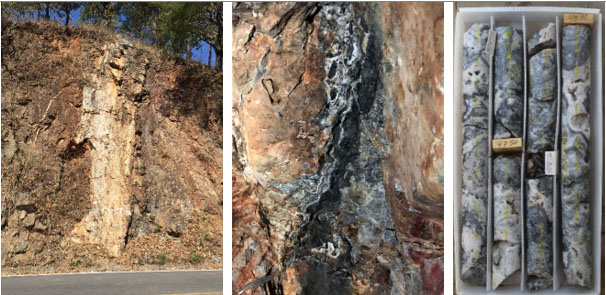
Prismo’s second Mexico project, Los Pavitos, consists of one concession covering 5,289 hectares near Alamos, Sonora, an important mining region with important historical production and good infrastructure. Los Pavitos is an early-stage exploration project; to date less than half of the property has been systematically mapped and sampled, but already 5 structures traced over 0.5 to 1.5 km each have been identified along with several smaller structures. Prismo has taken approximately 1,500 outcrop chip samples and completed 25 trenches totaling 698 meters in length with an additional 350 samples and completed a LiDAR survey over the property. A first pass drill program was completed in 2023, consisting of 25 shallow core holes for 2,370 meters, with positive results for several targets. At the Santa Cruz targett, hole LP-SC-02 cut 10.2 g/t Au and 51.3 g/t Ag over a downhole length of 6.65 meters within a wider interval of 5.77 g/t Au and 31.1 g/t Ag over a downhole length of 11.93 meters. The first hole drilled at Las Auras, LP-AU-01, intersected 3.58 g/t gold over 1.15 meters (core length) within a wider interval of 3.65 m (core length) with 2.33 g/t gold and 87.6 g/t silver. Prismo is planning to continue mapping and sampling over areas that have yet to be explored, and to conduct a detailed ground or drone based geophysical survey to focus drilling on the best areas along the long structures.

and surface sampling results for gold. Inset shows silver results clustered in the SE Santa Cruz area

from 54.88 to 61.53m reported 10.2 g/t Gold and 51.3 g/t Silver.
The project, which was generated by geologist and Prismo Metals Board Member Rafael Gallardo, is believed to have potential for both the typical epithermal veins of the Alamos district and “orogenic” or shear-hosted gold hosted in the highly metamorphosed basement rocks that crop out sparingly below the region’s extensive blanket of mid-Tertiary volcanic rocks. Los Pavitos lies along the projection of the Caborca Orogenic Gold Belt, and the fabric and style of metamorphic deformation of the basement rocks is similar to that elsewhere in the belt.

Prismo’s third project is Hot Breccia, consisting of 227 contiguous mining claims covering 1,420 hectares located in the heart of the world class Arizona Copper Belt. The project lies about 45 km south of the Resolution copper deposit, one of the largest om the world, and four kilometers from the historic high grade Christmas mine which recorded production of about 481.6 million pounds of copper from 20.2 million tons at a grade of 1.2% Cu plus significant gold and silver (Sources: Arizona Geological Society Spring Field Trip Guide in 2014). Prismo has not been able to verify the Christmas production information and it is not necessarily indicative of the mineralization on the Hot Breccia property. Prismo holds the option to earn up to a 75% interest in the project from Infinitum Copper Corp. (TSXV: INFI, OTCQB: INUMF) (“Infinitum”), subject to a 2% NSR royalty to a private company.
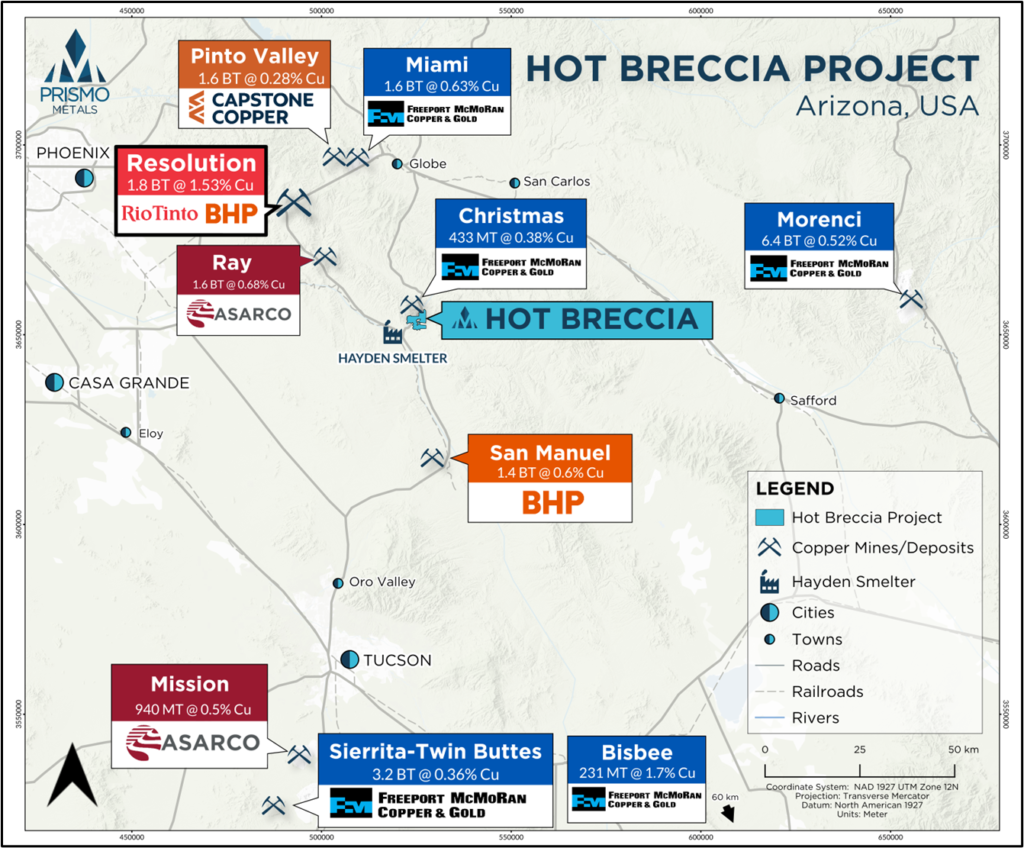
The project was explored by major companies over 40 years ago, but was dropped when the copper price decreased and the Christmas mine ceased production in the early 1980’s. A Kennecott subsidiary drilled seven holes from 1972 to 1981 and Phelps Dodge drilled two holes near the current property in the same era. All drill holes intersected hydrothermal alteration within the volcanic rocks that overlie the typically better mineralized Paleozoic carbonate rocks with increasing alteration intensity downwards. The carbonate host units have several copper intercepts reported to exceed 1% copper and elevated zinc.
Highlights of Kennecott drilling:
OC-1: 77’ with 0.54% Cu at 2,100’
OCC-7 60′ of 1.4% Cu, 4.6% Zn at 2900′
OCC-8: 25’ with 1.73% Cu and 0.11% Zn at 2,305’ and 15’ with 1.4% Cu and 0.88% Zn at 2,350’
Phelps Dodge drill hole PD 2 reported 1,270 feet of variably mineralized skarn with several intercepts over 1% copper and a high of 3.16% copper
Prismo has conducted geologic mapping and sampling over the project and completed a airborne geophysical ZTEM survey in 2023. Mapping by Barrett (1972) showed a dike swarm of porphyritic intrusive rocks similar to the causative intrusions at the nearby Christmas deposit. Numerous showings with anomalous copper and/or gold have been identified along large-scale structures parallel to the dikes.
Hydrothermal breccia pipes, for which the property is named, occur over several hundred square meters. Breccias cut vertically through volcanic rocks and are associated with Laramide-age porphyritic quartz diorite and diorite dikes like the one mentioned above. The breccia bodies are generally matrix supported and contain fragments of various lithologies not present at surface in the area, including irregular to rounded fragments of sedimentary rocks such as limestone and quartzite, various intrusive and volcanic lithologies, and mineralized garnet and magnetite skarn. Skarn fragments have also been transported upwards by intrusions that form a dike swarm cutting northeasterly across the property.
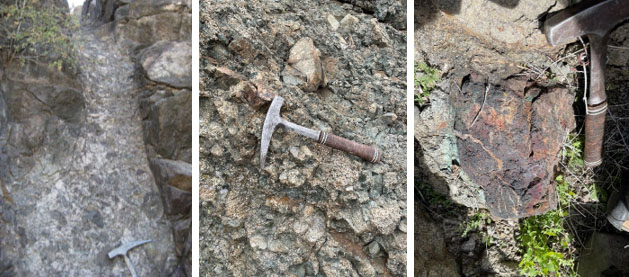
The Paleozoic sedimentary rock sequence that hosts mineralization in nearby deposits is known to occur beneath the volcanic rocks several hundred meters below the surface. It is interpreted that both the breccia bodies and the dikes sliced vertically upwards ripping-up mineralized fragments from below and transporting them through the overlying volcanic cover rock exposing them in surface outcrops. These fragments were mineralized prior to transport and their high-grade assays and the limited available historic drill data suggest that underlying bedrock at depth is also likely mineralized. The ZTEM survey identified a conductive body at depth in the area of the past drilling and the location of the breccia bodies with mineralized fragments. Prismo has submitted a drill plan to the BLM and is expecting to conduct a 5,000-meter drill program in mid-2024. Explore Tech has been contracted to recommend priority drill holes based on geologic and geophysical parameters using artificial intelligence.

To learn more about Prismo Metals, go to https://prismometals.com/
To learn more about the activity in Mexico and to view the digital map, go to https://digigeodata.com/area/mexico/
